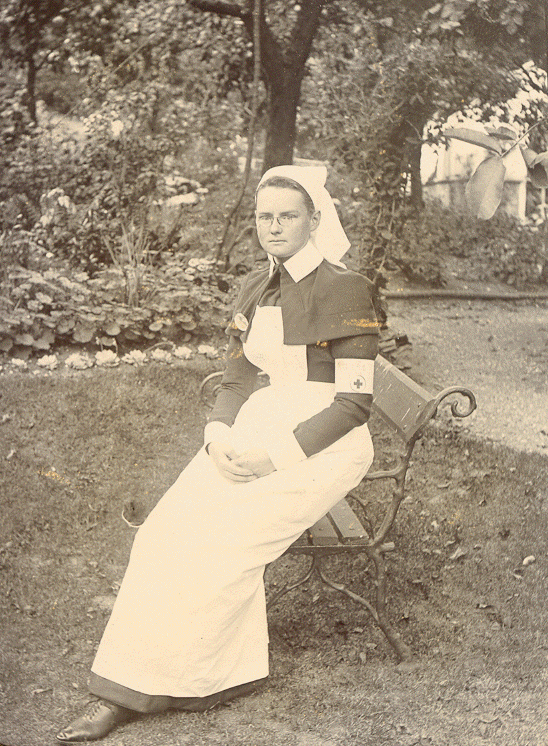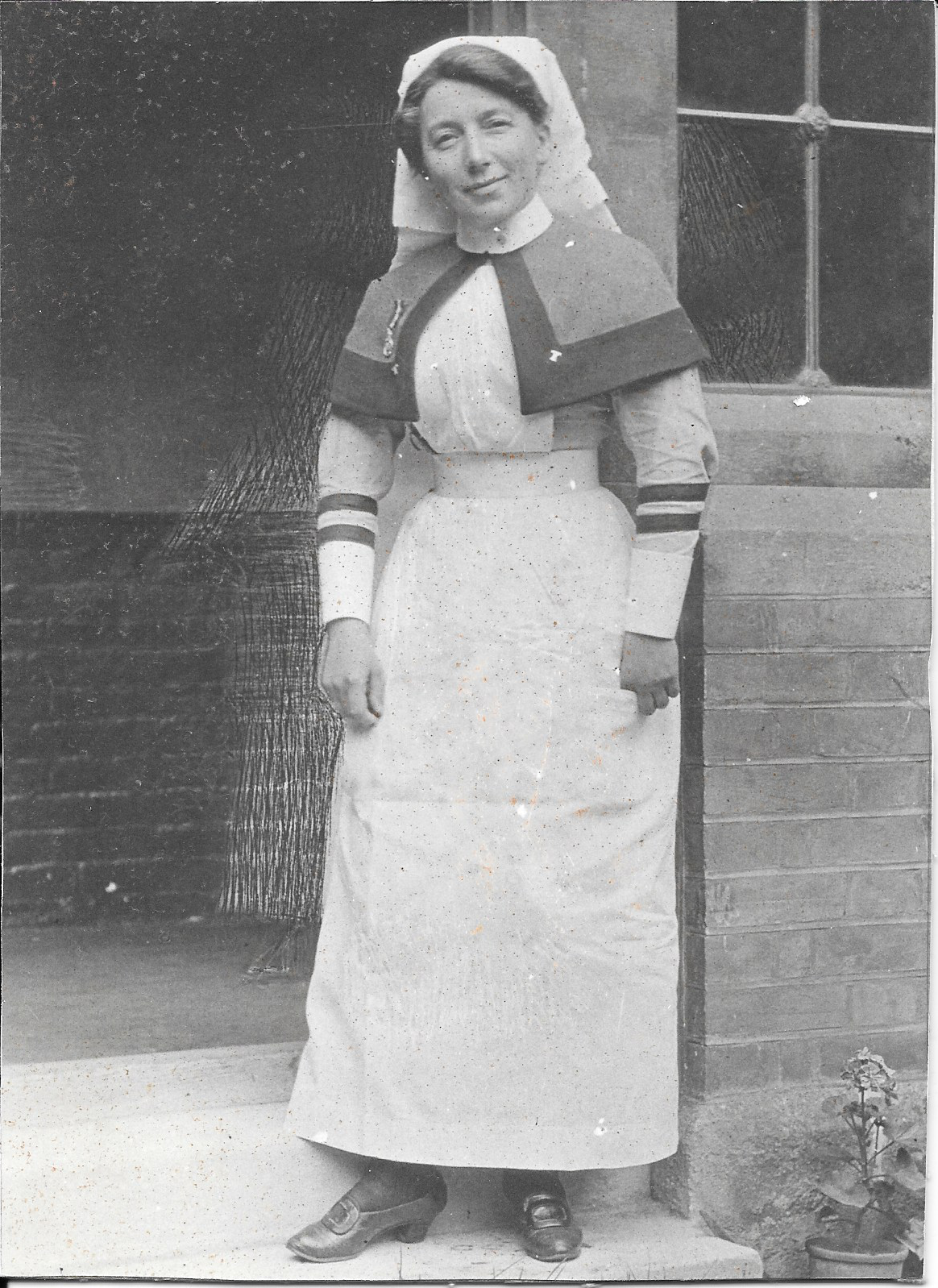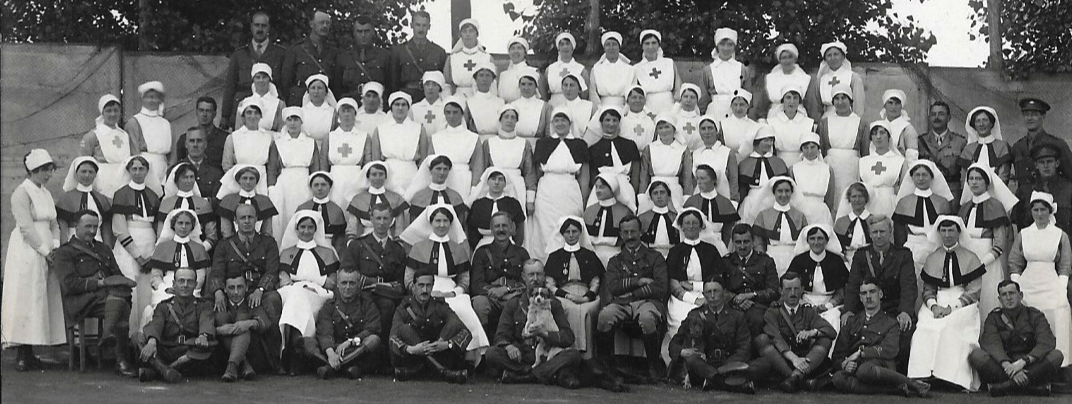Uniforms Boer War and WW1
Context
Often we want to identify nurses by the uniforms they are wearing. Sometimes it is really obvious, but sometimes it is small identification features that lead us to recognise the nursing service, and the era. We are going to use a few examples below to help set out the identification features to look for (as well as things that do not help so much). You are always welcome to send me photographs you need help with.
Boer War to WW1
Army nurses serving in the Boer War were either regular in the Army Nursing Service (ANS) or reservists in the Princess Christian's Army Nursing Service (Reserve) (PCANSR). They wore dresses, aprons and nursing veils that were virtually identical (bearing in mind that nurses were not issued uniforms, but had an allowance to get them made up to a pattern).
Differences between ANS and PCANSR are not obvious because at this time both wore the scarlet tippet. The ANS nurses did not have a tippet medal like those worn by nurses in WW1. The PCANSR nurses had a round silver tippet badge (see the Tippet Medals section for a picture), which they wore on the right-hand side of the tippet.
Also note the style of the collar which is the main difference between uniforms of this period and the one that followed.
World War 1
This photograph demonstrates that the basic design of the nurses uniform had not changed much in the years between the Boer War and WW1. The main difference being in the style of the collar.
In WW1, Army nurses could be regulars in Queen Alexandra's Imperial Military Nursing Service (QAIMNS), reservists in Queen Alexandra's Imperial Military Nursing Service (Reserve) (QAIMNSR), or in the Territorial Force Nursing Service (TFNS). They often worked alongside each other, and with assistant nurses from the Voluntary Aid Detachments or VADs as they were known.
By WW1, Army nurses also carried the rank of 'Staff Nurse', 'Sister', or 'Matron'. So in identifying Army nurses from WW1 we can look for both service and rank. To do this we need to look at the style of tippet, any tippet medals, and (if visible) the cuffs of their long-sleeved dresses.
- QAIMNS nurses: wore scarlet tippets with the QAIMNS tippet medal on the right (see the Tippet Medals section for a picture)
- QAIMNSR nurses: wore grey tippets with a scarlet facing, with the QAIMNSR tippet medal on the right (see the Tippet Medals section for a picture)
- TFNS nurses: wore grey tippets with a scarlet facing, with the TFNS tippet medal on the right (see the Tippet Medals section for a picture), and small 'T' badges on each corner of the tippet.
All three nursing services had the same rank details. Staff Nurses had plain sleeves, Sisters had two scarlet bands (like the photograph above), and Matrons had scarlet cuffs.
Group photograph of one of the Base Hospitals at Rouen
This group photograph helps to illustrate the differences in uniforms:
In my view the Army nurses in this picture include:
- 3 QAIMNS nurses (the Matron and 2 Sisters)
- 18 QAIMNS(R) nurses (including some Sisters)
- 2 TFNS nurses
- 3 Australian Army nurses (different collars and slightly different tippets)
I can see a few who are Boer War veterans from the medal ribbons they are wearing.



